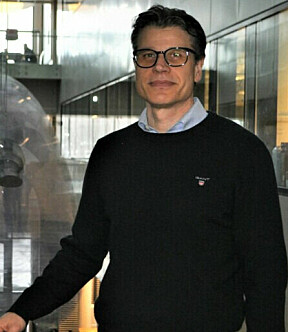
New drug stopped aggressive brain cancer in mice
The mice treated with the new medication had a 100 per cent survival rate. But many promising studies have ended in almost as many disappointments in past years, according to one Norwegian researcher.
Researchers at Johns Hopkins University in the USA have developed a drug to treat brain cancer and tested it on mice.
The medication is in the form of a hydrogel, which is applied after surgery in the area where the tumour was located.
Mice treated with the gel solution had a 100 per cent survival rate.
The researchers are targeting a form of cancer called glioblastoma. It is the most common form of brain cancer and the most aggressive.
“We don’t usually see 100 per cent survival in mouse models of this disease,” says Betty Tyler at Johns Hopkins University in a press release.
"Thinking that there is potential for this new hydrogel combination to change that survival curve for glioblastoma patients is very exciting," she adds.
Spread of cancer cells
Terje Sundstrøm is a senior consultant in the Department of Neurosurgery at Haukeland University Hospital and an associate professor at the University of Bergen.
He says the study is exciting, but that it has weaknesses.
About 250 people in Norway develop glioblastoma every year. There is a dire need to develop better treatments for this form of cancer.
Survival after diagnosis averages 14-16 months. There has been no major progress in treatment for several decades, says Sundstrøm.
One of the things that makes this cancer difficult to treat is that the tumour is not clearly defined. The cancer cells spread to other parts of the brain.
“Glioblastoma is an invasion. The tumour cells infiltrate the brain tissue and can disperse widely and far from where you see a tumour,” Sundstrøm says.
Historical example
Sundstrøm provides a historical example from the early 20th century. American brain surgeon Walter Dandy noticed that patients with aggressive brain cancer relapsed after he operated on them.
“‘Then we just have to be more aggressive,’ Dandy thought, so he split the brain in two and removed the half of the brain where the original tumour was,” says Sundstrøm.
This resulted in some of the patients living a little longer, but with major neurological consequences, he says.
Eventually, patients had a recurrence of the tumour in the other brain hemisphere, indicating that the cancer had spread far and wide already before the surgery.
Combines medication and antibody
The researchers combined an anticancer drug and antibodies in the new study.
The cancer drug paclitaxel and the antibody aCD47 are merged into a gel solution to make it easier for the immune system to attack the cancer.
The hydrogel is applied to the area where the tumour was operated on. The active substances are gradually released over several weeks.
The treatment appeared to activate the mice's immune system against the cancer.
When the researchers injected a new glioblastoma tumour into the brains of the mice, their immune systems were able to defeat the tumour without further drug treatment.

Grew differently in mice than in humans
Sundstrøm says that the type of cancer cells used is a weakness of the study.
“The researchers used a very old cell line that grows in a slightly different way than glioblastoma does.”
“The tumour in the mouse brain appears to be fairly well defined and round at the edges in the images,” he says.
“It looks like the cancer cell infiltration into the surrounding brain region is relatively limited.”
That is not the case in humans.
“A common occurrence in this type of study is for the model to have limited representativeness of the real world conditions.”
“Models are often used that don’t sufficiently resemble the disease in humans. It’s often easier to treat the tumours in mice.”
Similar treatment already exists
Sundstrøm says that implanting the gel in humans will probably be quite easy.
The gel solution could work well in the vicinity of the tumour, and maybe even initiate an immune response that destroys cells located farther away. But that remains to be seen.
A similar local treatment for brain cancer called Gliadel already exists.
“But it isn’t used much and has limited effectiveness,” says Sundstrøm.
Believes that immunotherapy has potential
Several studies on immunotherapy treatment for brain cancer have initially looked promising, but when researchers expanded studies to other animals or clinical trials in humans, the results have been disappointing, says Sundstrøm.
In some cases the treatment has even made the pain worse.
“We have to take preclinical studies with a good dose of healthy scepticism. Even if 100 per cent of mice survive, there’s still a really long way to go before a treatment might benefit our patients.”
Sundstrøm still believes that immunotherapy in brain cancer has unrealized potential.

“We’d hoped to see the same development as in the melanoma field, where treatment has been completely transformed in the last ten years.”
Melanoma is a type of skin cancer.
“Ten years ago, if you developed metastatic melanoma – the type that spreads – you had maybe a 10 per cent chance of surviving,” says Sundstrøm.
“Whereas if you get metastatic melanoma now – in the best studies combined with immunotherapy – you can perhaps achieve a 60 to 70 per cent survival rate.”
Testing drugs on micro versions of tumour
Another way to go is to develop more personalized treatment.
This is a goal of the Norwegian Brain Tumour Consortium, a national research network for personalized treatment of brain cancer where Sundstrøm is active.
The network has worked to improve information sharing across hospitals and to increase the inclusion of Norwegian patients in clinical studies.
“But what we really want to achieve, and what we’re still working on, is to set up an experimental platform for brain tumour treatment in Norway,” Sundstrøm says.
The idea is to use new technology that makes it possible to remove the brain tumour from a patient and create hundreds of micro-tumours from the cancer cells in a special machine.
The researchers could then test different drugs, doses and combinations and choose the treatment that is the most effective for the individual patient.
A good choice
“Our dream is for everyone involved in cancer treatment to have a similar platform to provide personalized treatment, but it’s extremely expensive.”
Sundstrøm believes glioblastoma would be well suited to test out such a system.
He notes that just over 250 patients a year develop glioblastoma in Norway. “We have complete oversight over all the patients with glioblastoma. It’s a good choice of cancer to conduct this type of study on to investigate whether life can be saved in the public health system.”
Reference:
Feihu Wang, et al.: Self-assembling paclitaxel-mediated stimulation of tumour-associated macrophages for postoperative treatment of glioblastoma. PNAS, 25 April 2023. Summary.
———
Read the Norwegian version of this article at forskning.no





































